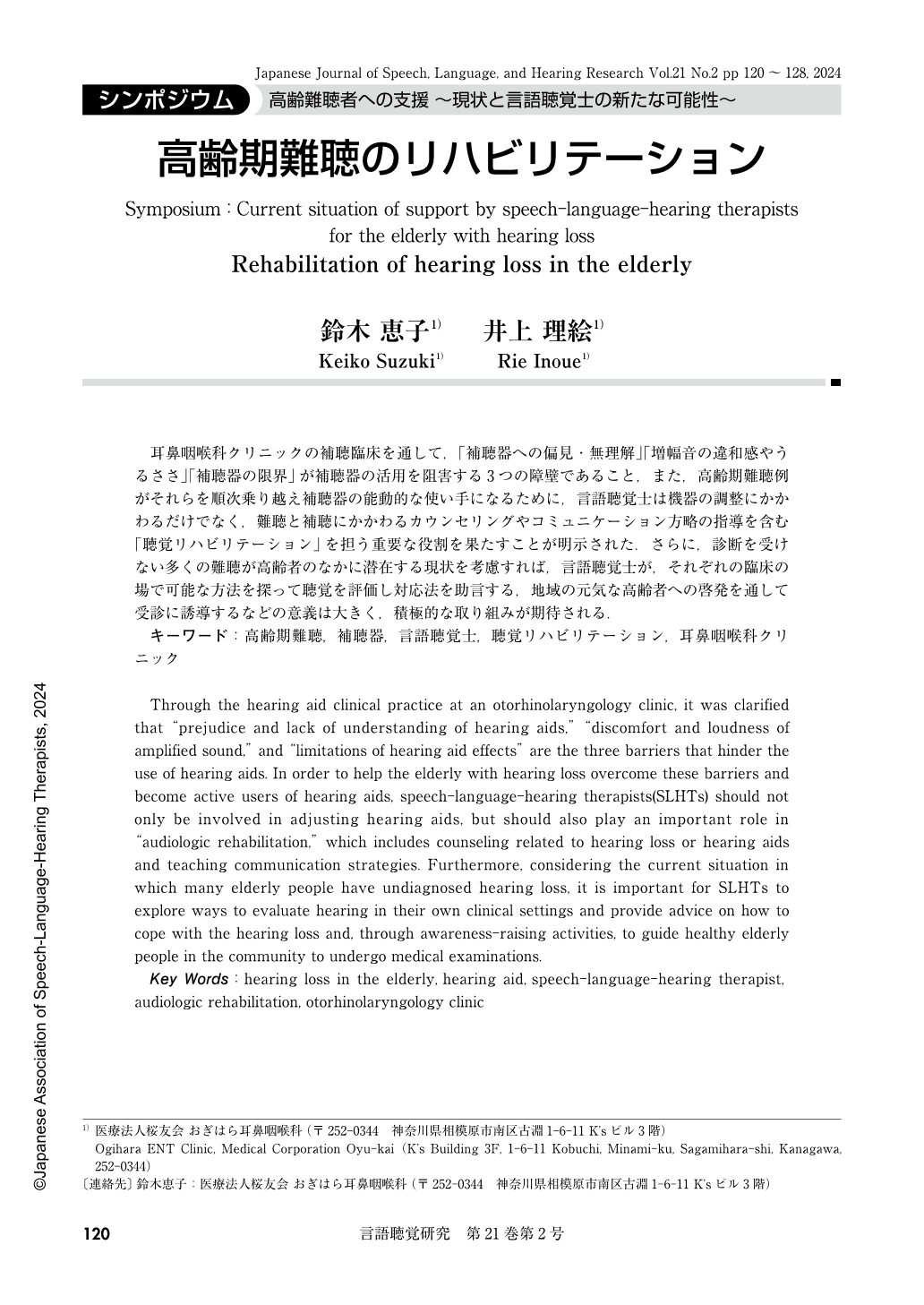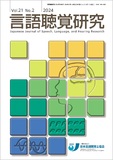Japanese
English
- 有料閲覧
- Abstract 文献概要
- 1ページ目 Look Inside
- 参考文献 Reference
耳鼻咽喉科クリニックの補聴臨床を通して,「補聴器への偏見・無理解」「増幅音の違和感やうるささ」「補聴器の限界」が補聴器の活用を阻害する3つの障壁であること,また,高齢期難聴例がそれらを順次乗り越え補聴器の能動的な使い手になるために,言語聴覚士は機器の調整にかかわるだけでなく,難聴と補聴にかかわるカウンセリングやコミュニケーション方略の指導を含む「聴覚リハビリテーション」を担う重要な役割を果たすことが明示された.さらに,診断を受けない多くの難聴が高齢者のなかに潜在する現状を考慮すれば,言語聴覚士が,それぞれの臨床の場で可能な方法を探って聴覚を評価し対応法を助言する,地域の元気な高齢者への啓発を通して受診に誘導するなどの意義は大きく,積極的な取り組みが期待される.
Through the hearing aid clinical practice at an otorhinolaryngology clinic, it was clarified that “prejudice and lack of understanding of hearing aids,” “discomfort and loudness of amplified sound,” and “limitations of hearing aid effects” are the three barriers that hinder the use of hearing aids. In order to help the elderly with hearing loss overcome these barriers and become active users of hearing aids, speech-language-hearing therapists(SLHTs) should not only be involved in adjusting hearing aids, but should also play an important role in “audiologic rehabilitation,” which includes counseling related to hearing loss or hearing aids and teaching communication strategies. Furthermore, considering the current situation in which many elderly people have undiagnosed hearing loss, it is important for SLHTs to explore ways to evaluate hearing in their own clinical settings and provide advice on how to cope with the hearing loss and, through awareness-raising activities, to guide healthy elderly people in the community to undergo medical examinations.

Copyright © 2024, Japanese Association of Speech-Language-Hearing Therapists. All rights reserved.


